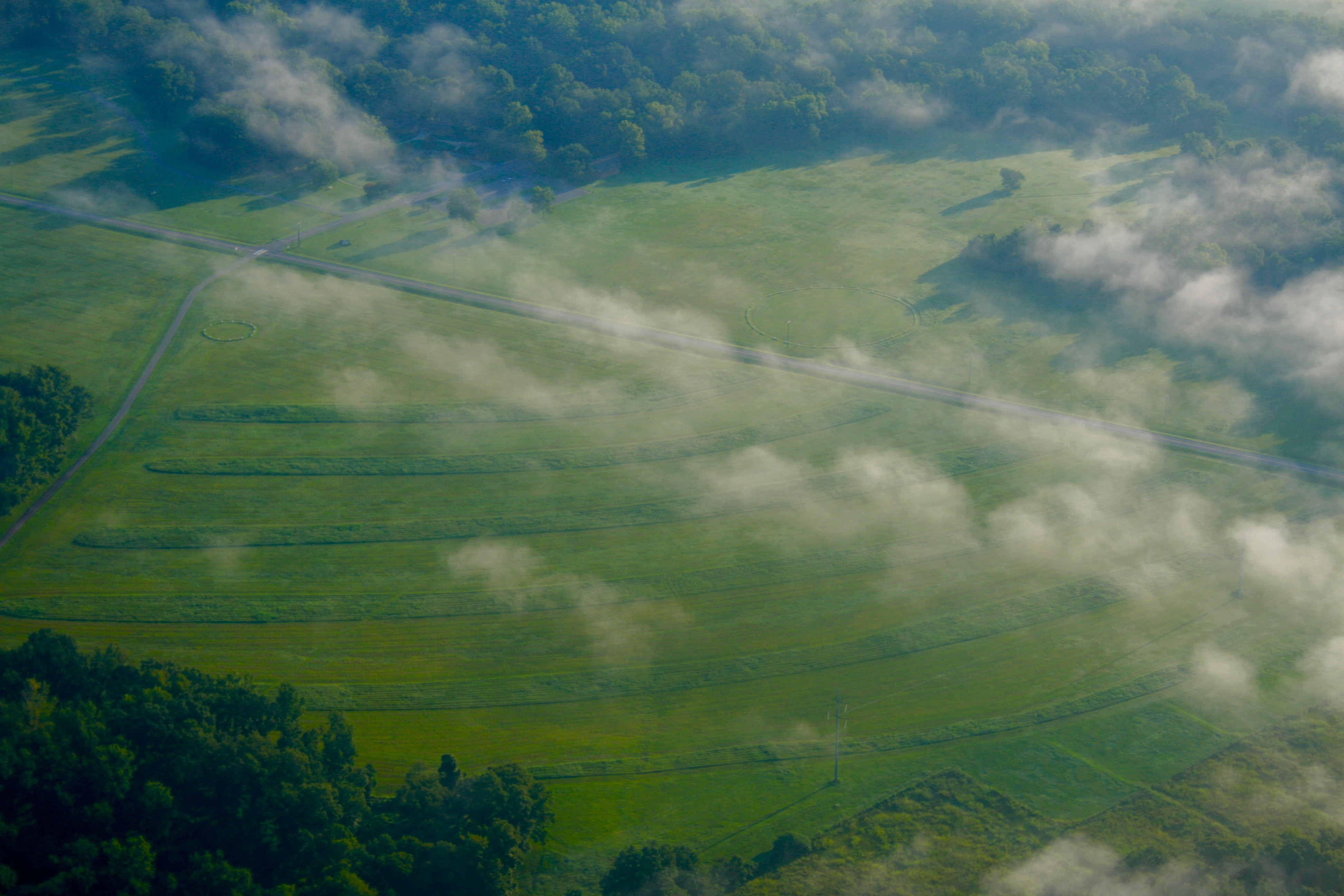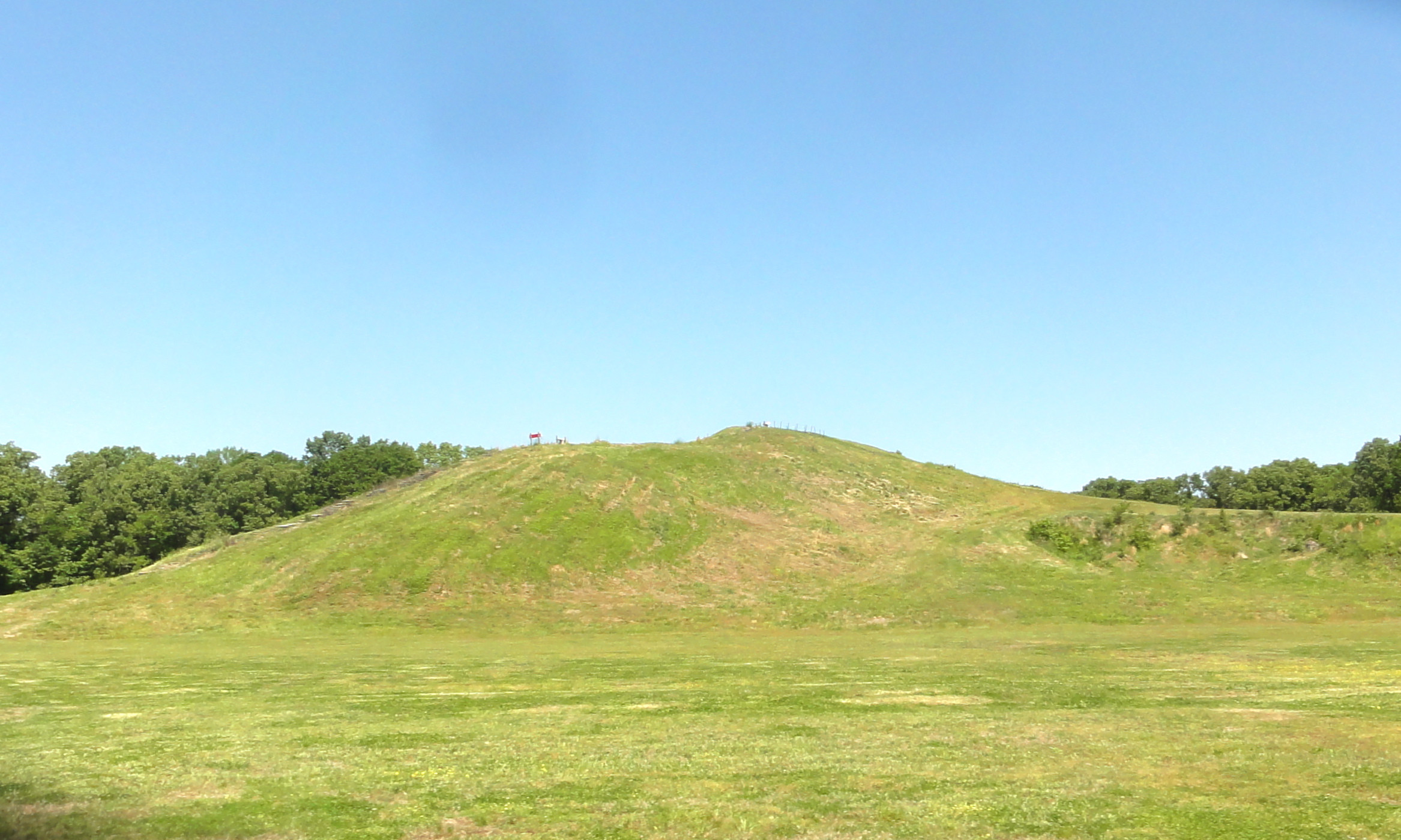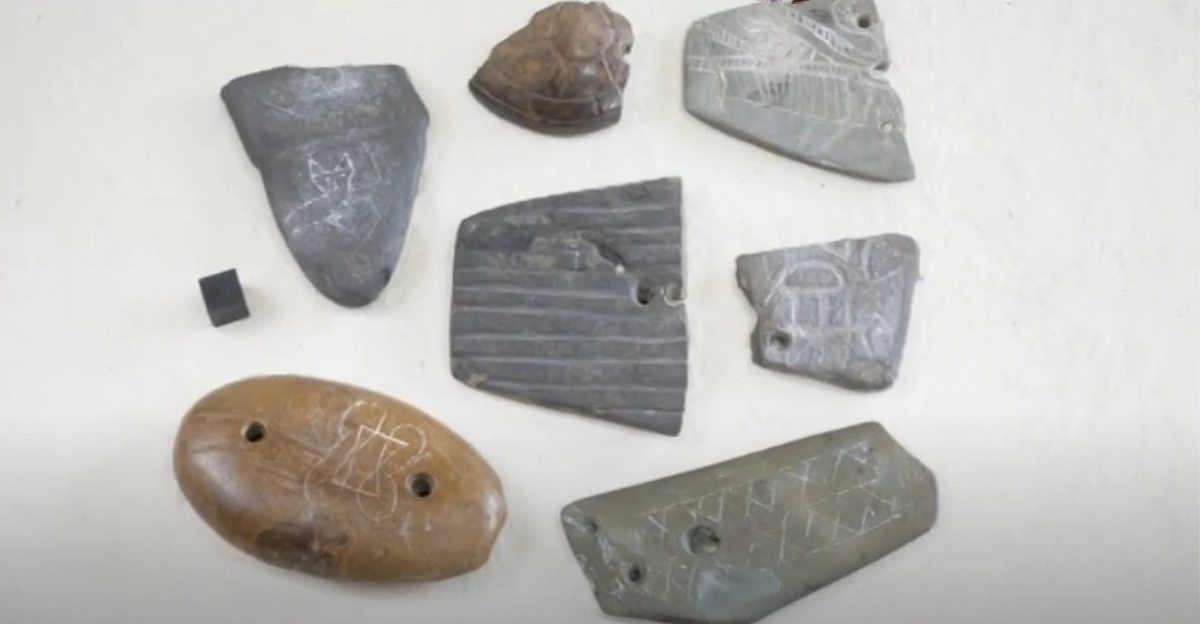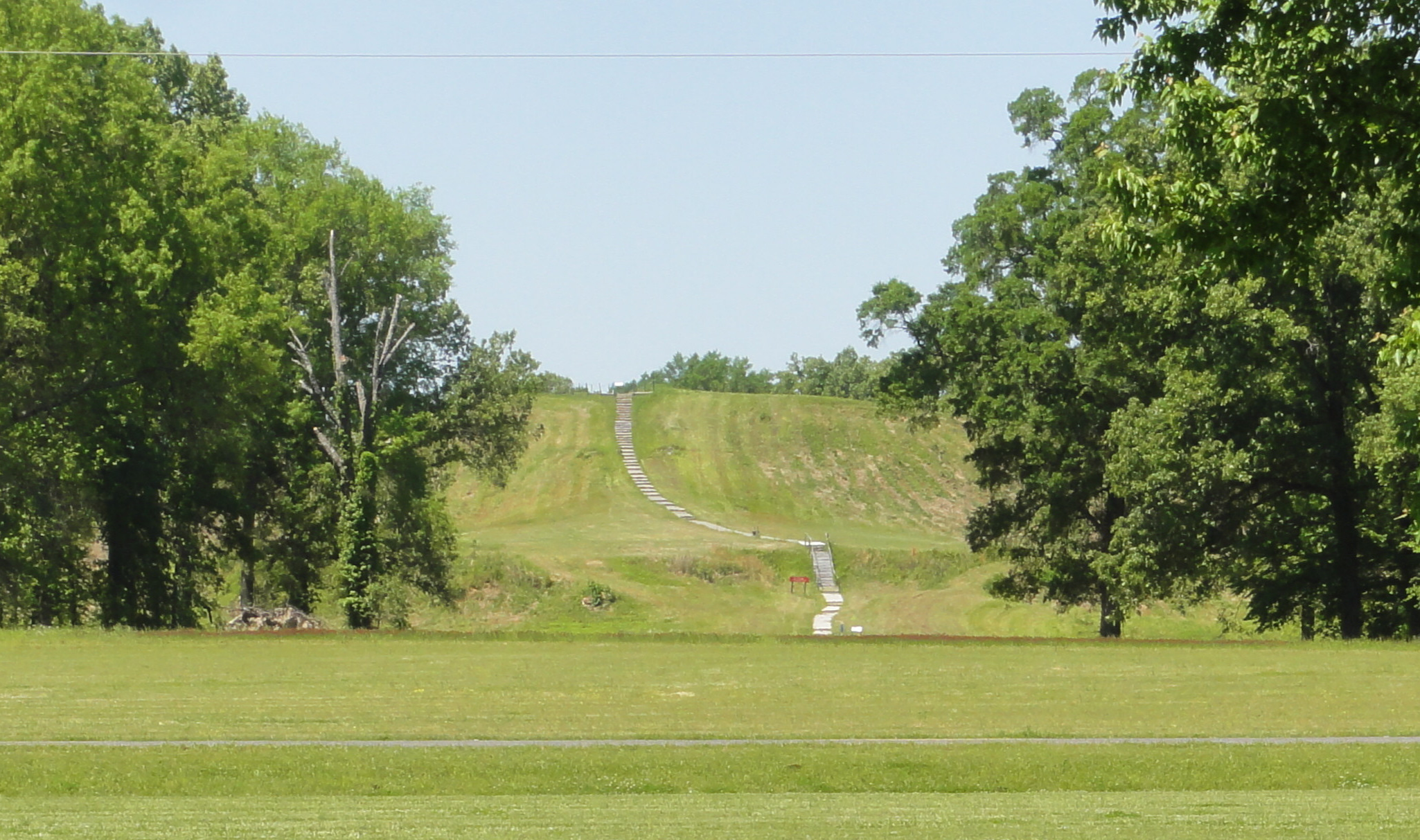Hidden in the forested landscape of Louisiana lies one of North America’s most remarkable archaeological treasures. The ancient earthworks at Poverty Point, constructed by Native Americans nearly 3,400 years ago, reveal advanced engineering and a complex society. The site challenges common assumptions about early civilizations in the Americas.
The Sheer Scale Of Poverty Point
Poverty Point’s massive mounds and ridges cover approximately 900 acres. Its most prominent feature is a 72-foot-tall earthen mound surrounded by concentric ridges, radiating like a giant fingerprint across the land. These monumental earthworks required the labor of thousands, moving an estimated 30 million pounds of soil using simple tools like baskets, demonstrating impressive organization and community effort.
 Jennifer R. Trotter, Wikimedia Commons
Jennifer R. Trotter, Wikimedia Commons
A Center For Trade And Ceremony
Evidence suggests Poverty Point was not a residential village but a ceremonial and trading hub. Artifacts from distant regions including stone, copper, and shells have been found at the site, showing it was part of a vast trade network. The site likely hosted large gatherings, rituals, and exchanges, making it a focal point for cultural and spiritual life.
Engineering Without Modern Tools
The builders of Poverty Point achieved remarkable precision without metal tools, draft animals, or wheeled vehicles. Using simple tools made from stone, bone, and wood, they shaped massive mounds with careful planning and labor coordination. Their knowledge of soil stability and drainage enabled the structures to endure for millennia.
An Ancient Civilization On American Soil
The earliest earthworks at Poverty Point were built around 1700 BC. This timeline highlights the sophisticated accomplishments of Native American societies often overlooked in discussions of ancient monumental architecture.
 Bart Everson, Wikimedia Commons
Bart Everson, Wikimedia Commons
Sophisticated Knowledge Of Astronomy
Some believe Poverty Point’s design reflects astronomical alignments. The site’s arrangement of mounds and ridges might have served as a calendar, marking solstices and other celestial events. If confirmed, this would show the builders possessed advanced observational skills and a deep connection to the cosmos.
A Civilization Without Agriculture?
One of Poverty Point’s mysteries is that its builders relied largely on hunting, fishing, and gathering rather than intensive farming, unlike many other ancient civilizations that built large monuments. This challenges conventional theories that monumental architecture depends on surplus agriculture, suggesting alternative models for social organization and labor mobilization.
 Poverty Point World Heritage Site Video, Louisiana Office of Cultural Development, YouTube
Poverty Point World Heritage Site Video, Louisiana Office of Cultural Development, YouTube
Rediscovery And Excavation
European settlers were aware of the site by the 19th century, but serious archaeological investigation didn’t begin until the 1950s. Since then, researchers have used modern technology like ground-penetrating radar and aerial photography to uncover the site’s full extent. Each new discovery adds to the story of this complex and dynamic culture.
A UNESCO World Heritage Site
In 2014, Poverty Point was designated a UNESCO World Heritage Site, recognizing its global significance. This honor has brought greater awareness to the site’s cultural importance and the ingenuity of the people who built it. It stands as one of the earliest known examples of large-scale construction in the Americas.
 Bart Everson, Wikimedia Commons
Bart Everson, Wikimedia Commons
Rewriting The Narrative Of Ancient America
Poverty Point forces historians and archaeologists to reconsider the capabilities of ancient Native American societies. Far from being primitive hunter-gatherers, these people demonstrated remarkable engineering, social organization, and cultural sophistication.
A Lasting Legacy Of Innovation
The ancient builders of Louisiana’s earthworks left behind monuments that still inspire awe. Their achievements prove that advanced civilizations thrived in North America long before European contact. As research grinds on, sites like Poverty Point will continue to reshape our understanding of early human ingenuity and creativity.
You May Also Like:
The Great Mystery Of Easter Island







